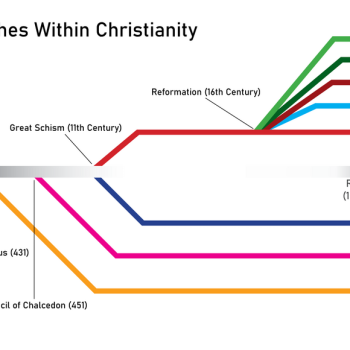The modernist architecture of the first half of the 20th century rejected ornamentation, tradition, and history itself. In the age of reason, science, and progress, “form follows function.” Buildings were bare structures of concrete, glass, and steel. If they were beautiful–and some were–that is a byproduct of their pragmatic purpose. Today, though, modernist architecture–like modernist art, literature, philosophy,and theology–has become dated, culturally-irrelevant, and old-fashioned. But now the historic preservation movement is adding relics of modernist architecture to the buildings it is trying to save.
If you go on a large university campus, one that has been around for many years, you will typically see many different styles of architecture. A Prairie Gothic library might be next to a neo-classical administration building, all surrounded with classroom buildings from the Victorian era, with its gingerbread bric-a-brac, or the Great Depression, with its WPA social-realist classicism. There will also be contemporary buildings, those built very recently, and these will be extremely different, but they are designed to be attractive and to fit in with the environment, including all of the other buildings.
Then there will be the buildings from the 1950’s and 1960’s. They may look like concrete bunkers or plain boxes. They may lack all symmetry and any kind of human scale. They don’t fit with their surroundings. Though strikingly cutting edged at their time, they now seem quaint and rather embarrassing. Students may consider them eye-sores. But should they be preserved in the name of history?
From Katherine Shaver in the Washington Post:
Even with its glistening emerald-green glass, the boxy 1960s-era Zalco Building in downtown Silver Spring is hardly noticed by many passersby, let alone thought of as a historic structure.
The very idea makes John Cranston, the building’s engineer, chuckle. “I don’t think George Washington slept here or anything,” he said.
But to Clare Lise Kelly, a historic-preservation planner for Montgomery County, and to other architectural experts, the office building at Georgia Avenue and Cameron Street is a shining example of International style. It’s time, they say, for it and other “mid-century modern” buildings and homes — those with sleek, boxy designs from the 1950s and 1960s — to be considered for historic preservation.
“The challenge is always preserving the recent past,” Kelly said. “It’s easy to look at things from 100 years ago and see them as historic. . . . If we don’t act now to assess resources from this time period, they’ll be gone, and then it’s too late to say, ‘That apartment complex was really special.’ ”
Popular interest in mid-century architecture and interior design has surged in the past few years with the success of the “Mad Men” TV series. But architectural preservationists began paying closer attention over the past decade as more modernist buildings passed the 50-year mark, traditionally the minimum age for consideration as historic.
Preserving some of that past, experts say, is especially important now, as areas such as White Flint in Montgomery and Tysons Corner in Fairfax County continue to transform from sprawling suburbs into more urban nodes of high-rise buildings clustered around transit stations. Many of the newer developments, they say, feature more traditional architecture because they are designed to re-create the feel of the more walkable, old-fashioned Main Street.
Kelly said she realizes that some people consider modernist buildings too young — and, in some cases, too plain or ugly — to warrant protection. It’s not about age or looks, she said. It’s about preserving critical pieces of architectural history from the post-World War II population and building boom that transformed suburbs such as Montgomery from rural bedroom communities into dense subdivisions and commercial districts.
via Montgomery’s ‘Mad Men’ modern buildings — are they worth protecting? – The Washington Post.
Here is the Zalco building in Silver Springs, Maryland, one of the structures under consideration for historic preservation:

Now I’m not totally against preserving at least some of the modernist buildings. A skyscraper by Mies van der Rohe still has its elegant and formal beauty, being an example of how function really can lead to aesthetic form.
Then again, how far should historic preservation go? Should buildings that are out-and-out ugly not be torn down just because they represent a time when ugliness was in vogue? Should we preserve strip malls because they represent a significant moment in the history of retail? And their pre-fab construction and pragmatic function is certainly a legacy of modernism.
What strikes me is the irony of buildings that defied history now being consigned to history and being dependent on the preservation of history.












